Can dogs eat Rotisserie Chicken? Dogs love food too, and they also deserve to eat good quality meat. Rotisserie chickens are usually very high in fat and calories, but they are perfect for dogs because they don’t require much chewing or preparation.
Rotisserie chickens are often marketed as being healthier than other types of poultry. They are typically sold at supermarkets and restaurants, and are prepared using rotisseries. These devices allow the bird to cook slowly over low heat without burning. This method preserves the flavor and texture of the meat.
Most dog owners would agree that their pets enjoy a well balanced meal every day. The problem is that most commercial pet foods contain lots of preservatives, additives, and fillers. If you want to feed your dog a nutritious meal, then you should consider buying a rotisserie chicken instead.
What is rotisserie chicken?
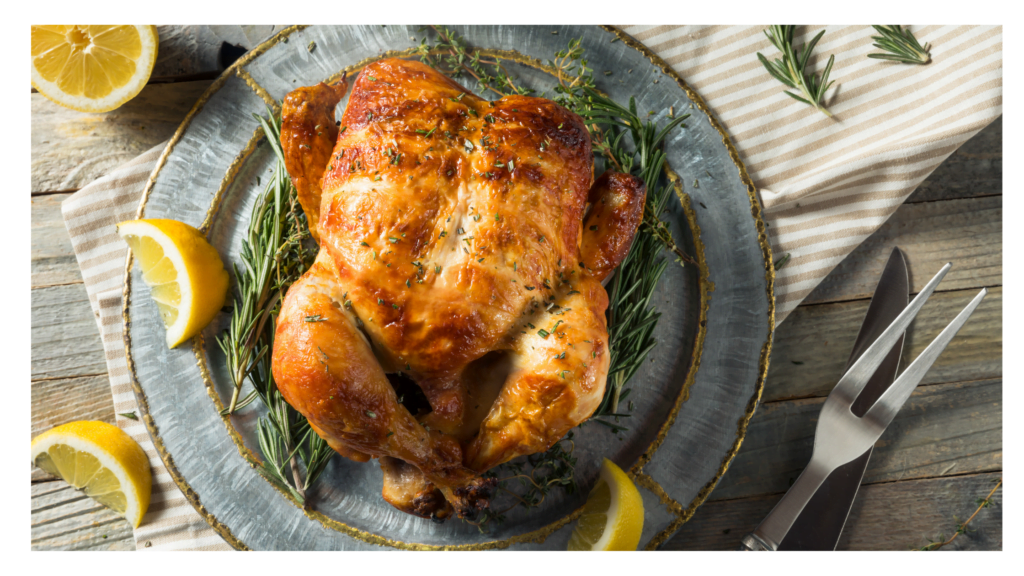
A rotisserie chicken is simply a whole chicken that has had its skin removed and replaced with a wire mesh basket. This allows air to circulate under the chicken while cooking, resulting in juicy meat. Rotisserie chickens are typically sold pre-cooked and frozen. They are often found at fast food restaurants such as McDonald’s, KFC, and Popeyes Louisiana Kitchen.
Why are rotisserie chickens so popular?
The popularity of rotisserie chickens is due to several factors, including the fact that they are relatively inexpensive compared to raw whole chickens, easy to prepare, and convenient to store. They are also a great way to use up leftover poultry.
Rotisserie chickens are usually cooked over a spit, rotating slowly while being basted with oil or butter. This process allows the meat to cook evenly without drying out. When buying a rotisserie chicken, look for one that has been pre-seasoned and seasoned with herbs and spices.
Can Dogs Eat Rotisserie Chicken?
The short answer to this question, according to veterinarians, is yes. A few people do feed rotisserie chicken exclusively to their pets. They claim that the meat is healthier than store-bought chicken because it doesn’t contain hormones or antibiotics. But there are some downsides to giving your dog rotisserie chicken. First off, you’re likely to end up with a very fat dog. Second, it’s not always easy to find good quality rotisserie chicken. Third, it’s not necessarily nutritious. And finally, it’s probably not worth the trouble.
Is Rotisserie Chicken Good for Dogs?
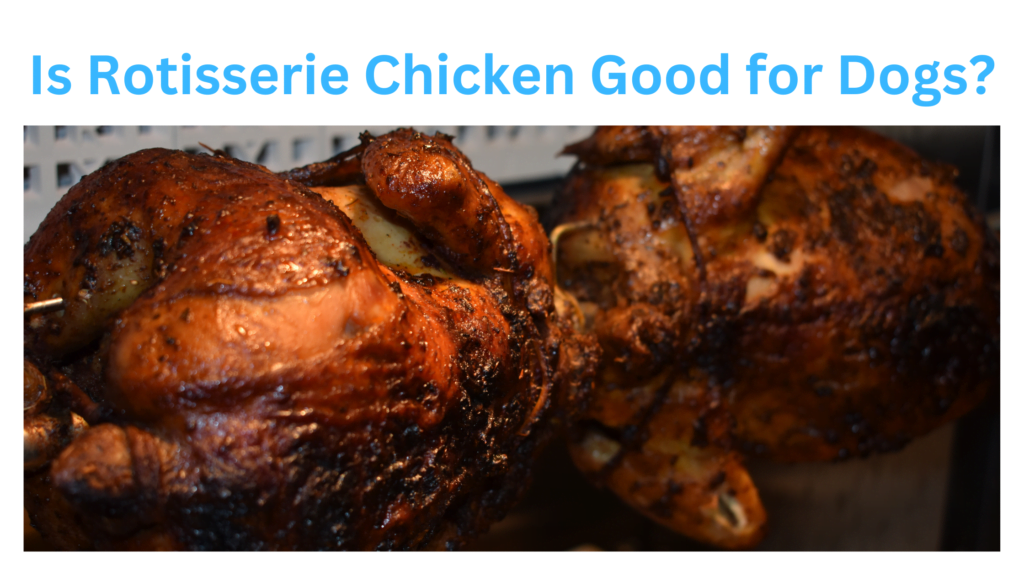
Rotisserie chickens are often touted as being one of the healthiest foods for dogs because they contain lean proteins like chicken breast meat. But there are some things about rotisserie chicken that aren’t necessarily great for dogs.
The chicken skin is an especially harmful part of the bird that contains lots of saturated fats and sodium. These ingredients are known to cause heart disease and high blood pressure in humans, and dogs are no different.
Cutting out those elements can make a rotisserie bird healthier for dogs.
There are two potential risks of eating rotisserie chickens.
The Potential dangers of rotisserie chicken is that a store bought rotisserie chicken might have been injected with briny water before being roasted. The chickens are injected with this brine in order to help keep the meat moist during cooking. But most brines contain large amounts of salt which isn’t something you want to give your dog too much of.
Most chickens roasted at home won’t have been injected by brin because they’ll have been rubbed with oil, butter or even bacon fat prior to roasting. But I’ll come back to this later.
The second danger relating to rotisserie chicken is that shop bought ones are usually the chickens which are close their sell by date. This could mean that the chickens aren’t very old and therefore haven’t had enough time to dry out properly. If this happens, the chicken will taste bland and greasy.
Also Read: Can Dogs Eat Nuts? Comprehensive Guide to dogs and Nuts
Benefits Of Feeding Your Dog Rotisserie Chicken
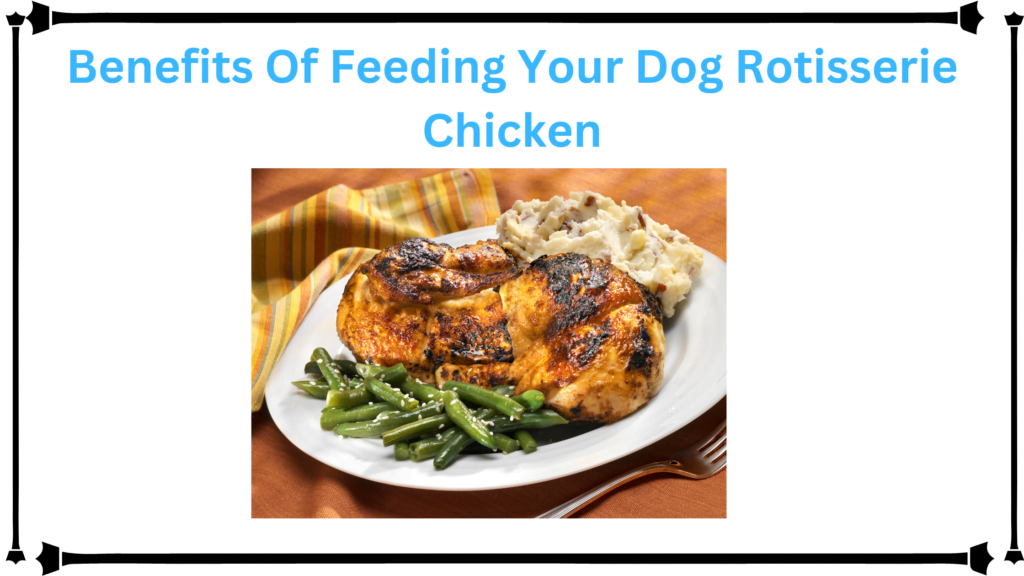
Rotisserie chicken is one of those foods that everyone loves.
It tastes delicious, it’s cheap, and it’s convenient. However, did you know that feeding rotisserie chickens to your dog can benefit him/her in several ways?
Let’s take a look at the benefits of feeding your dog rotisserie chicken.
#1. Healthy Bones
Dogs don’t have bones like humans do. Instead, dogs have flat, thin bones called “cranial bones.” This means that dogs are prone to bone fractures.
However, feeding your dog rotisseries chicken can prevent these injuries. Studies suggest that feeding your dog rotisserie chicken can strengthen his/her bones.
This is because the calcium found in chicken helps strengthen bones.
#2. Better Digestion
Chicken has been shown to improve digestion in dogs. This is because chicken contains enzymes that break down proteins and carbohydrates.
These enzymes help your dog’s digestive system perform its job properly.
#3. Healthier Skin
Feeding your dog rotisserie chickens can also help your dog’s mouth and skin. Chicken contains vitamin E, an antioxidant that protects against dryness and wrinkles.
Vitamin E also improves the health of your dog’s skin.
#4. Less Hair Loss
When your dog eats too much meat, he/she may develop hairballs. This causes your dog to suffer from hair loss.
However, feeding rotisserie chickens can help prevent this problem. Chicken contains protein, which helps your dog maintain proper muscle mass.
Protein also helps your dog avoid hair loss.
#5. Improved Immunity
Studies show that eating chicken can help your dog fight off infections. Chicken contains zinc, selenium, and vitamins B6 and B12. These nutrients help your dog’s white blood cells grow stronger.
White blood cells protect your dog from infection.
So next time you feed your dog rotisserie chicken, give him/her a treat!
#6. Increased Exercise Capacity
Many owners say that their dogs love to run after birds. If you feed your dog rotisserie you can encourage him/her to exercise more.
By running after birds, your dog gets plenty of physical activity. He/she burns calories and strengthens muscles.
#7. Reduced Stress Levels
Some studies suggest that feeding your dog rotisserie chicken can help relieve stress levels.
This is because chicken contains tryptophan, an amino acid that makes your dog feel relaxed.
Tryptophan also helps your dog sleep better at night.
#8. Help With Anxiety
A study published in the Journal of Veterinary Behavior Medicine showed that feeding your dog rotisserie chicken can help alleviate anxiety in dogs.
Researchers fed dogs either raw beef or cooked chicken. They then observed the dogs’ behavior.
They discovered that dogs fed chicken were calmer than dogs fed beef.
#9. Helps Prevent Kidney Stones
Kidneys play a vital role in maintaining your dog’s overall health. One of the most common problems affecting dogs is kidney stones.
However, feeding your dog rotisserie chicken can help prevent this condition. Chicken contains phosphorus, which prevents your dog from forming kidney stones.
#10. Improves Mood
Eating chicken can also help your dog become happier. Researchers believe that the smell of chicken can trigger happy feelings in dogs.
This is because chickens contain serotonin, a chemical that triggers happiness in animals.
#11. Prevents Constipation
Constipation is another common problem among dogs. Some breeds are more susceptible to constipation than others.
However, feeding chicken can help prevent this problem in dogs. Chicken contains fiber, which keeps your dog’s bowels moving regularly.
#12. Helps Reduce Urinary Tract Infections
Urinary tract infections are very painful for dogs. However, feeding your dog rotisserie can help prevent them.
Chicken contains taurine, an organic compound that reduces inflammation in your dog’s urinary tract.
#13. Helps Maintain Proper Body Temperature
Dogs often experience heatstroke when they go out into the hot weather. Heatstroke occurs when your dog’s temperature rises above 104 degrees Fahrenheit.
Heatstroke can cause serious damage to your dog’s organs.
However, feeding rotisserie chicken can prevent heatstroke in dogs. Chicken contains potassium, which maintains your dog’s normal body temperature.
#14. Helps Control Diabetes
Diabetes is a chronic illness that affects millions of people worldwide. It is caused by a lack of insulin production.
However, feeding chickens can help control diabetes in dogs. Chicken contains magnesium, which regulates sugar levels in your dog’s body.
#15. Helps Treat Cancer
Cancer is a major concern for many pet parents. However, feeding your dog rotisserie chicken can prevent cancer in dogs.
Chicken contains antioxidants such as beta carotene, lycopene, lutein, and zeaxanthin. These compounds help your dog’s liver cell growth.
#16. Helps Fight Inflammation
Inflammation is a natural response to injury. However, some types of inflammation can lead to diseases such as arthritis and gout.
Feeding your dog rotisserie chickens can help reduce inflammation in dogs. Chicken contains omega-3 fatty acids, which help your dog’s leakage of toxins.
#17. Helps Improve Eyesight
Eye conditions such as cataracts and glaucoma affect millions of pets every year. However, feeding your dog gives your dog improved eyesight.
Chicken contains high amounts of vitamin A, which helps your dog’s vision. Vitamin A also helps your dog’s lipid layer around his/her eye.
#18. Helps Protect Against Heart Disease
Heart disease is a leading killer of both human beings and dogs. However, feeding your dog rotisserie helps protect against heart disease.
Chicken contains cholesterol-lowering substances such as conjugated linoleic acid (CLA). CLA lowers bad cholesterol and triglycerides.
#19. Helps Keep Dogs Fit And Active
Dogs need regular exercise to stay healthy. However, many dogs find it difficult to keep up with daily walks.
Feeding your dog rotisserie chickens can increase his/her stamina. Chicken contains creatine, which helps your dog build lean muscle tissue.
#20. Helps Manage Weight
Weight gain is a common problem for many dogs. However, feeding rotisserie chickens can prevent weight gain in dogs.
Chicken provides your dog with essential nutrients such as protein, iron, and zinc. These nutrients help your dog maintain a healthy weight.
#21. Helps Prevent Obesity
Obesity is a growing issue in today’s society. Many people blame fast food restaurants for contributing to obesity.
However, feeding dogs rotisserie chicken can actually help prevent obesity. Chicken contains monounsaturated fats, which help regulate appetite.
Monounsaturated fats also help lower your dog’s risk of developing type 2 diabetes.
#22. Helps Prevent Arthritis
Arthritis is a painful joint disorder that affects millions of people each year. However, feeding your dog rotisserie chicken helps prevent arthritis in dogs.
Chicken is rich in arginine, an amino acid that relieves pain in joints.
#23. Helps Relieve Pain In Humans
Pain relief is one of the top reasons why people choose to eat chicken. Chicken contains tryptophan and tyrosine, two chemicals that make your dog feel relaxed.
Rotisserie chicken vs roast chicken vs boiled chicken
| 100 g serving | Rotisserie | Roast | Boiled |
| Calories | 164 | 165 | 165 |
| Protein | 27 g | 25 g | 26g |
| Fat | 6.4 g | 6.5 g | 3 g |
| Sodium | 345 mg | 161 mg | 64 mg |
In the table above you can see how much energy, protein, fat, and sodium there is in 100 grams of each type of chicken. I found it interesting to compare the nutritional information of the three different kinds of chicken.
The main thing I noticed was that the calorie count was very close. This surprised me because I had always thought that roasting chicken would be a lot healthier than boiling it. However, according to my research, both methods of cooking chicken give you roughly the same amount of calories.
What does surprise me though is the fact that the fat content seems to be quite high. You might think that roasting chicken would reduce the fat content compared to boiling it, but that isn’t necessarily true. When you boil chicken, you cook the meat thoroughly, making sure that every part gets cooked evenly. As such, the fat content is pretty consistent throughout the whole piece.
On the other hand, when you roast chicken, you don’t want to overcook the breast portion. So while the breast is getting cooked properly, the thighs and legs aren’t being cooked enough. As a result, the fat content is higher in the thigh and leg portions.
As far as sodium goes, I’m actually surprised that it’s lower in the roasted chicken. Roasted chicken tends to be saltier than boiled chicken. This is probably due to the fact that most people add extra salt to the dish during preparation. But since we’re talking about a 100 gram serving here, I doubt that anyone would go overboard adding too much salt to it.
So what do you think? Do you prefer one method over another? Let us know in the comments section below.
Which is better: rotisserie chicken or Dry dog food ?
If you feed your dog dry dog food, there are some benefits to it. For one thing, it’s cheap. But it’s also very processed, meaning it contains ingredients that aren’t necessarily good for your pooch. If you opt for dry dog food, make sure you look for brands that don’t contain corn syrup, wheat gluten, soy protein concentrate, and artificial colors and flavors. These ingredients can cause gastrointestinal issues.
Rotisserie chicken is much healthier because it doesn’t contain any of those things. In fact, it’s often considered the healthiest option out there. However, you still need to watch out for how much you give your dog. You don’t want him getting too many calories, which could lead to obesity. Make sure he gets enough nutrients like vitamins A, D, E, K, B12, calcium, phosphorus, magnesium, zinc, iron, copper, manganese, iodine, selenium, pantothenic acid, niacin, folic acid, biotin, choline, and vitamin B6.
Where to Buy Rotisserie Chicken for Dogs?
Rotisserie chickens are available almost everywhere now, but it’s important to know what type of chicken you’re buying. Many supermarkets offer a wide variety of brands, including those that only sell their brand of chicken. Others might have a broader range.
If you want to make sure you’ve got the best rotisserie chicken for puppies, look for birds that come with nutrition information. You can do this online or ask the store clerk. This way, you’ll know exactly how much protein, fat, sodium, carbohydrates and calories there are in each chicken breast.
Once you’ve found the right rotisserie chicken for your dog, follow the instructions on the packaging to prepare it. Most packages tell you how many servings there are per package, so you can easily adjust the amount you feed your pup. Just remember that larger breeds like Great Danes require more food than smaller breeds like Chihuahuas. Also, don’t forget about yourself — you deserve a little treat too!
How to prepare rotisserie chicken for your dog at home?
Whether you buy it from the store or cook it yourself, preparing rotisserie chicken for your dog isn’t too difficult.
If you have the tools, facilities, and know-how to make rotisserie chickens, you should definitely try it out.
However, there are a couple of things to keep in mind.
This recipe requires some basic equipment such as a spit roast, whole chickens, and an intense heat sources to cook the birds thoroughly.
All you need is a spit roasting machine, whole chickens, and a heat source to cook the birds thoroughly, like a grill or oven.
First off, stick with basic flavors – plain, perhaps with some lemon or very lightly flavored herbs is fine. Avoid heavy flavors like barbeque, salt, or anything else that might upset your dog’s stomach.
You can even cook it in the oven, though this tends to produce a slightly greasy chicken than one cooked over an open flame.
To combat this, don’t use any butter or oil when cooking the chicken. Instead, stick to low fat recipes and limit the amount of salt used.
That way, your dog will enjoy a healthier version of his favorite food, without having to worry about getting too much grease into him.
Secondly, shred the chicken with two forks; make sure to remove all the bone fragments along the way.
Finally, don’t forget to wash your hands thoroughly afterwards.
Frequently Asked Questions
Can dogs eat rotisserie chicken skin?
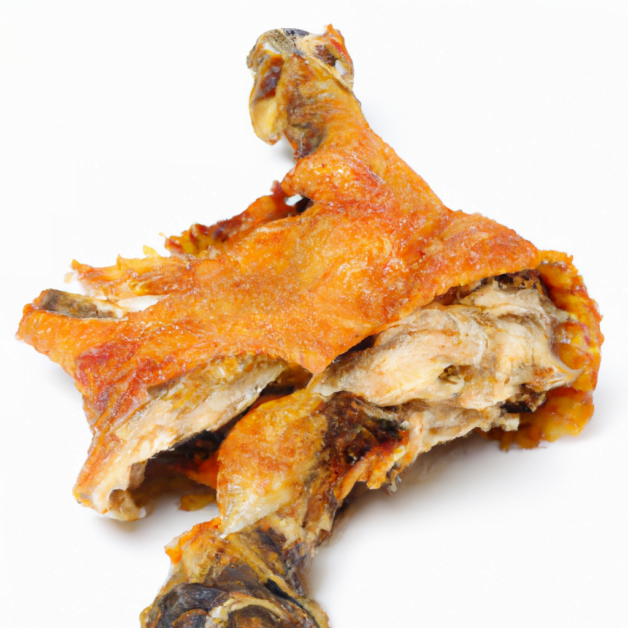
Chicken skin is one of the most popular ingredients in pet treats. Many people think that the skin is healthy because it is full of nutrients. However, this is not true. Chicken skin is 40% fat and contains 450 calories per 100 grams.
A study published in 2013 found that cooked chicken skin had no negative effects on human health. There are some drawbacks though. One is that the skin is often burnt during cooking. Another problem is that it could contain bacteria that cause salmonella poisoning.
The American Veterinary Medical Association says that chicken skin does not pose any risk to pets. They say that although it is high in fat, it doesn’t contain enough cholesterol to affect your dog’s heart.
While some people say that dogs shouldn’t eat anything that humans don’t eat, others argue that there isn’t much difference between what we eat and what our pets do.
And while many pet owners feel comfortable letting their dogs munch on chicken wings, drumsticks and thighs, others worry about the risk of choking or even poisoning.
Can dogs eat rotisserie chicken bones?
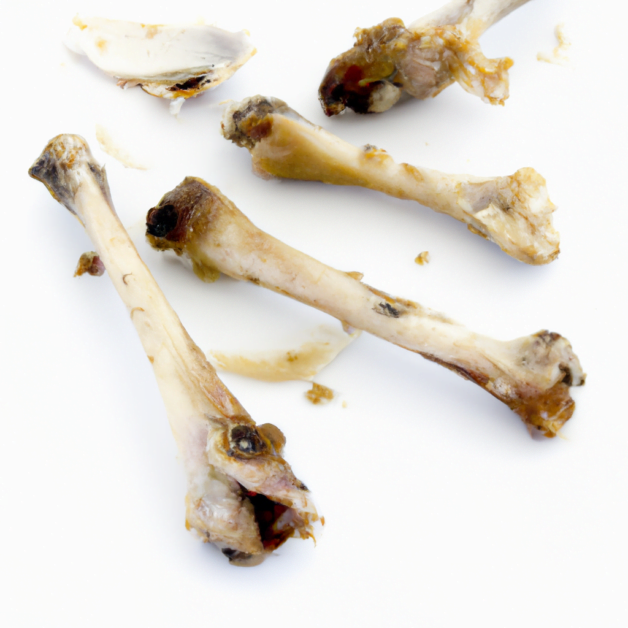
The American Veterinary Medical Association says that “cooked bones are less likely to cause problems,” noting that dogs tend to chew on bones because they’re hungry and because they like the texture. However, the group warns against feeding bones to puppies under six months old, since they might choke on the pieces.
But the problem isn’t limited to chicken bones. Bones from beef, lamb, pork, turkey and fish are all potentially harmful to dogs, according to the AVMA. Dogs can easily choke on small bones, especially those that are broken off larger bones.
And while most veterinarians agree that cooked bones pose little danger to dogs, they caution that raw bones can still be problematic. A study published in the Journal of Small Animal Practice found that dogs fed raw bones had a greater chance of developing dental disease.
How much rotisserie chicken should I feed my dog?
This is a very interesting question. Here’s the thing. Some of you will be trying to use rotisserie chicken as a big part of your homemade dog food diet.
Homemade dog food diets is something that we’ll cover in another article. But let me just say now that there are some things about making dog food that you need to know.
You need to make sure that what you’re feeding your dog is safe. You need to make sure that he’s getting enough protein. And you need to make sure that his diet doesn’t contain anything that could cause him harm.
Although chicken can form part of a dog’s diet, it cannot provide every nutrient that he needs. So, if you do decide to give your dog chicken, you need to supplement his diet with other sources of nutrition.
Can dogs eat Costco rotisserie chicken
Yes, Dogs can eat Costco rotisserie chicken.
Conclusion
The truth about feeding your dog rotisserie chickens
If you’ve been reading our blog lately, you know how important it is to feed your dog healthy foods. But what do you feed your dog? And what does he really want? We asked Dr. Sarthak Bhatnagar, to give us his expert opinion on the topic. He says, “Rotisserie chickens are great because they contain lots of lean proteins like skinless breast meat, thigh meat, and drumsticks. They also contain less fat than most commercial brands.”
So, if you’re looking for a quick meal option for your dog, look no further than a rotisserie chicken.







